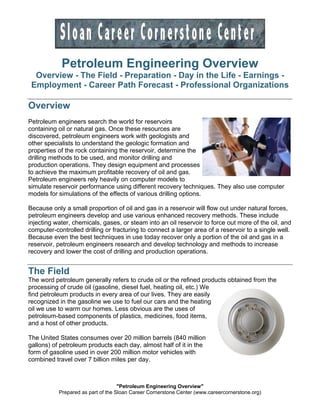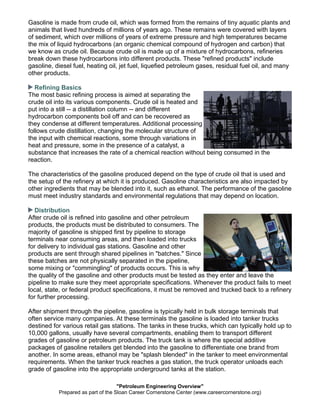The document provides an overview of petroleum engineering, detailing the roles and responsibilities of petroleum engineers in discovering and extracting oil and gas, along with education requirements and career paths. It discusses the refining process of crude oil into various products, and the distribution logistics for gasoline. The document also highlights salary expectations, employment statistics, and professional organizations relevant to the field.






